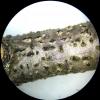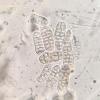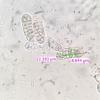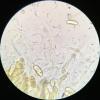
12-12-2025 18:39
Mirek GrycHello everyone.Macrofeatures similar to Mollisia b

09-12-2025 12:06
 Andgelo Mombert
Andgelo Mombert
Bonjour,Je recherche l'article concernant Hypobryo

07-12-2025 16:07
Arnold BüschlenHallo, ich habe in einer Moos-Aufsammlung (epiphy

08-12-2025 21:04
Mark Stevens"Hello everyone,I'm relatively new to microscopy (

08-12-2025 18:59
 Lothar Krieglsteiner
Lothar Krieglsteiner
.. found by a seminar-participant, I do not know t

08-12-2025 17:37
 Lothar Krieglsteiner
Lothar Krieglsteiner
20.6.25, on branch of Abies infected and thickened
Spores:
17.5-26.2 x 6.3-8.9µm
Me 21.7 x 7.9µm
Q 2.1-3.2
Qe 2.8
N=24
Hyaline, occasionally allantoid, rounded ends. They do not appear to bud.
(3)7(8) septate, with multiple longitudinal septa.
I have tried to key it out using Jaklitsch, W. M., & Voglmayr, H. (2014). "Persistent hamathecial threads in the Nectriaceae, Hypocreales: Thyronectria revisited and re-instated" but without much luck.
Any help would be appreciated.
Thank you in advance.
Ethan

it's from the group around T. zanthoxyli, but which one...
- Not T. rhodochlora, too narrow spores.
- T. zanthoxyli should have perithecia clearly immersed in stroma and much more curved spores (my Czech coll. attached), although there are also exceptions and the coll. published in https://doi.org/10.1007/s11557-021-01763-z looks much like yours in this aspect.
- T. lonicerae and T. virens I haven't seen myself. T. lonicerae differs macroscopically, as far as one could rely on this feature, also the spores have more narrow poles like T. berolinensis.
So I would say either T. zanthoxyli with atypically straight spores, or T. virens with atypically long spores.
Viktorie







